Packet Flow Based Reinforcement Learning MAC Protocol for Underwater Acoustic Sensor Networks
Abstract
1. Introduction
- To provide some background work on the feasibility of restructuring the slot size in a typical frame-based underwater MAC protocol to improve network performance.
- To propose a new slot structure with minimal overhead based on the relationship between packet transmission duration and the one hop propagation delay that is capable of achieving the theoretical channel utilization.
- To propose ALOHA-QUPAF, a novel dual-control intelligent approach to medium access control based on packet(s) flow in a linear chain network.
2. Frame Based MAC Protocol
Scenario and Network Model
- All nodes are homogeneous and communicate over a single channel, half-duplex mode.
- The collision model (non-capture) is used, i.e., if two or more packets overlap at the receiver, they are discarded.
- Nodes are globally synchronised, an assumption commonly employed to simplify analysis and applicable to quasi-stationary nodes synchronised before deployment.
- The interference range (Ifx) is twice the reception range (Rx); this model is typically employed for chain networks as an illustrative model to incorporate the effect of interference from nodes that are two hops away.
- All source/relay nodes can only transmit one packet per frame, a consequence of Assumption (4) yielding a frame consisting of four slots [20], as only one of four connected nodes can transmit successfully at a given time.
3. Model Analysis
3.1. Results
3.2. Q-Learning
- The new Q-value of Slot 2 becomes;; [−0.1]
- In the next frame, Slot 2 has the lowest Q-value and is not considered, and the node again chooses Slot 1 randomly (among Slots 0, 1 and 3). Following a successful ACK reception, the new Q-value of Slot 1 is updated.; [0.1]
- For Frame 2, the node chooses Slot 1 as it has the highest Q-value (0.1) and sends data; with successful ACK reception, the Q-value is updated accordingly.; [0.19]
4. Underwater Packet Flow ALOHA-Q: ALOHA-QUPAF
4.1. Protocol Design
- In a network with half-duplex nodes, they cannot transmit and receive at the same time (slot); therefore, we employ Q-learning to isolate all reception slots by punishing those slots to lower their Q-values. As such, when a node scans the Q-table, reception slots will have low Q-values and are unlikely to be selected for transmission.
- A continuous flow of packets over the chain is expected in saturated traffic with a healthy channel. Thus, a relay/sink expects a new packet(s) in every frame after receiving the first packet, and a packet collision is inferred whenever that stream of packets gets disrupted. To exploit this realisation, every time a relay node transmits a packet, it rewards the chosen transmission slot (positively updates the slot’s Q-value) if and only if a new packet is received afterwards.
- Slot selection: This is implemented by Q-learning to eliminate the reception slot(s). When a source node generates a packet and transmits, upon receiving the packet, the receiver (relay node) will record the reception slot () and update the Q-value of the slot according to (Equation (10)). Specifically, each slot in a frame is mapped to a value in the vector of Q-values (), and the Q-values are initialised with a uniform random number less than one, whereby for each reception, the node computes and updates accordingly with . Consequently, this continual negative reinforcement of reception slots isolates those slots, and the slot(s) with the highest Q-value(s) signifies a probable collision-free slot at the local level, therefore a good candidate(s) slot(s) for transmission. For a relay node, at the beginning of each frame, if a node has a packet(s) in its queue, it will schedule a packet transmission in a slot with the maximum Q-value; however, if more than one slot shares the maximum Q-value, one will be chosen at random from amongst them. Whilst the Q-value of the reception slot is always punished following any reception, the Q-value of the transmission slot is only updated after every transmission. If there is a subsequent packet reception, the transmission slot is rewarded (), otherwise it is punished (). However, since this scheme lacks a definitive feedback signal based on this node action(s) of transmissions, the success of any transmission in the chosen slot is uncertain. This is because, unless if the packet flow is network wide, a continuous transmission and reception by a relay node does not mean that a given node’s transmissions are not interfering with some other transmissions especially for the downstream links. Therefore, to avoid nodes from getting stuck in local minima, a control mechanism has to be devised to regulate the Q-values especially of the transmission slot.
- Flow harmony: Although we devise a means to obtain feedback from the environment (reward/punishment), the node cannot directly link these signals to its own action(s); hence, at any given time during the network run, we only have a partial observation of the channel condition; this type of process is best modelled as a partially observable Markov decision process (POMDP) [34,35]. This is because, instead of certainty in the network wide flow, the packet flow experienced by each node gives us a partial observation on the channel at the local level. The POMDP framework enables us to model the local observations by agents to generate a probability distribution of a belief state (in our case, settled or unsettled flow). The network can be in either stable or unstable packet flow states, and we therefore designate two belief states accordingly. We employ a simple heuristic strategy based on the stochastic averaging [36], whereby each node independently tracks its overall local packet flow in a given window, which we then translate as the distribution of the belief state. The distribution of the belief states is computed with Equation (11). For each reception in a frame, is updated by steps at the tracking rate . While the expression monotonically approaches one, it is continually windowed every () frames and compared to a fixed threshold (). Based on our simulation experiment, ideally, will reach by the 20th frame; hence, we heuristically set () to check for with a tolerance of , which should be achieved at ().If we designate the belief states and respectively as the initial state (both Q-values and reset; the network is assumed to have no stable flow during learning) and the flow harmony state, is decided when the averaging function exceeds the threshold, which indicates that flow harmony has been achieved at least in the node’s local interference group, otherwise the node resets to . In essence, every node has a window of 20 frames to isolate incoming reception slots and settle on a transmission slot. Whenever a particular node(s) fails to settle and join the flow, the reset will make the node switch to another slot and potentially notify other nodes in the neighbourhood as well.where , and denote the flow averaging, the learning/tracking rate and the increment scale, respectively.
| Algorithm 1: ALOHA-QUPAF algorithm. |
 |
4.2. Results
5. Discussion
6. Conclusions
Author Contributions
Funding
Data Availability Statement
Conflicts of Interest
Appendix A. Pictorial Analysis


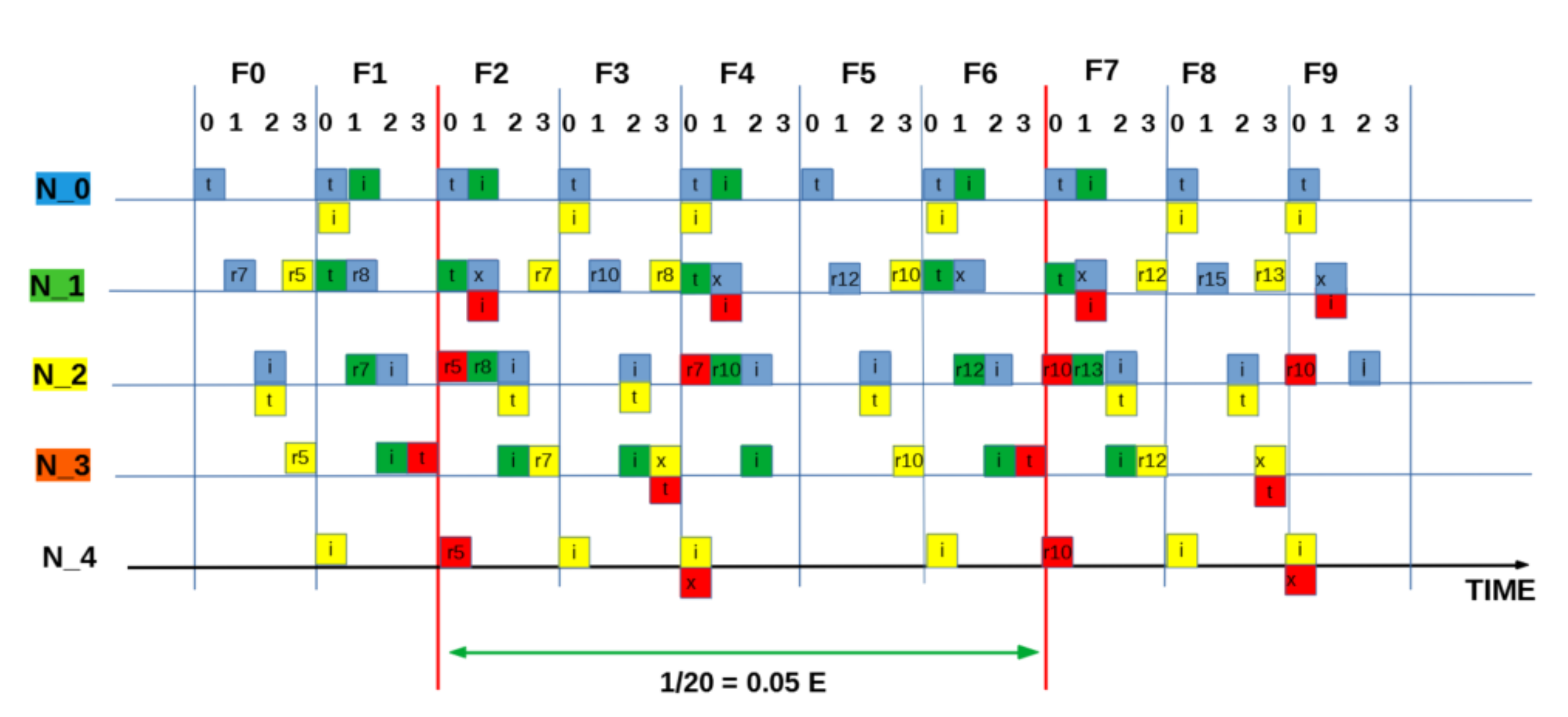
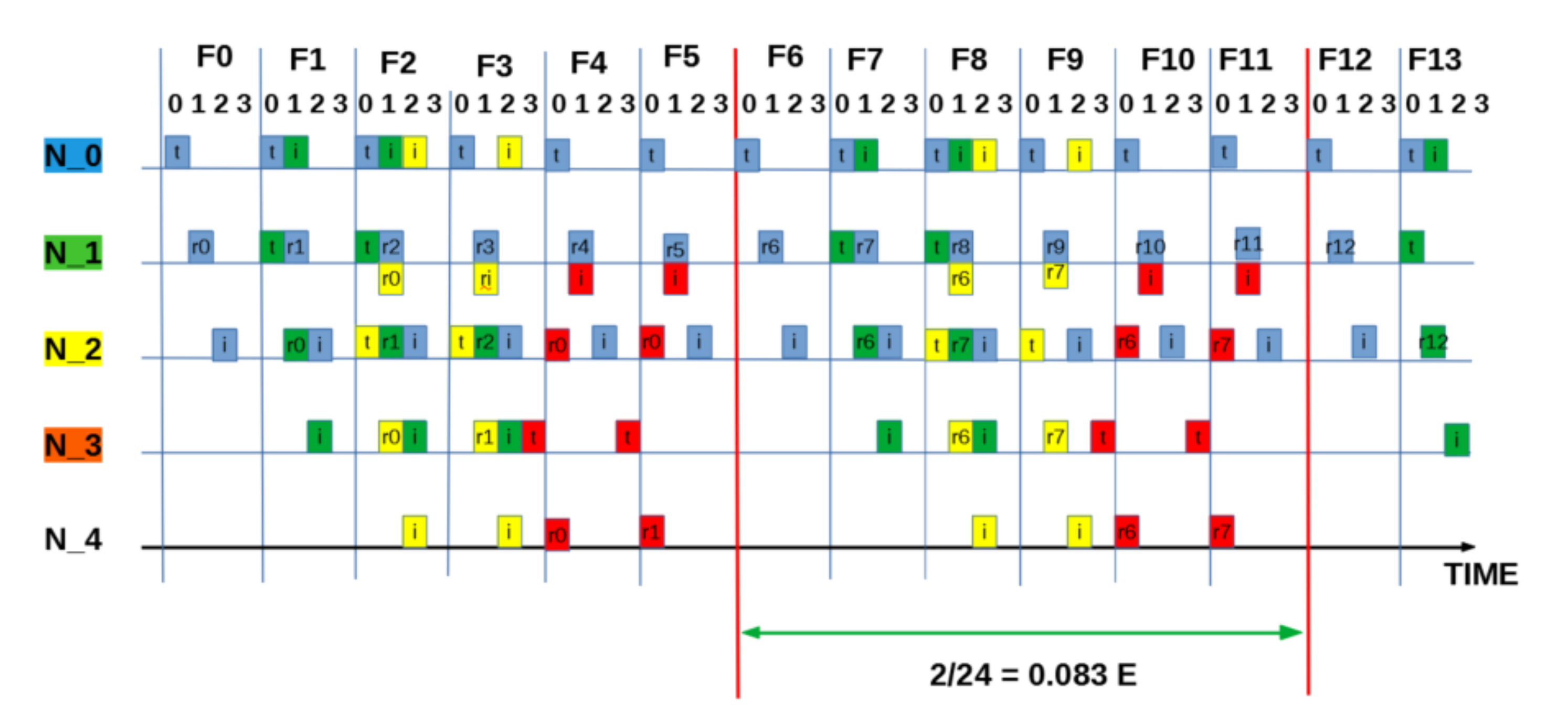


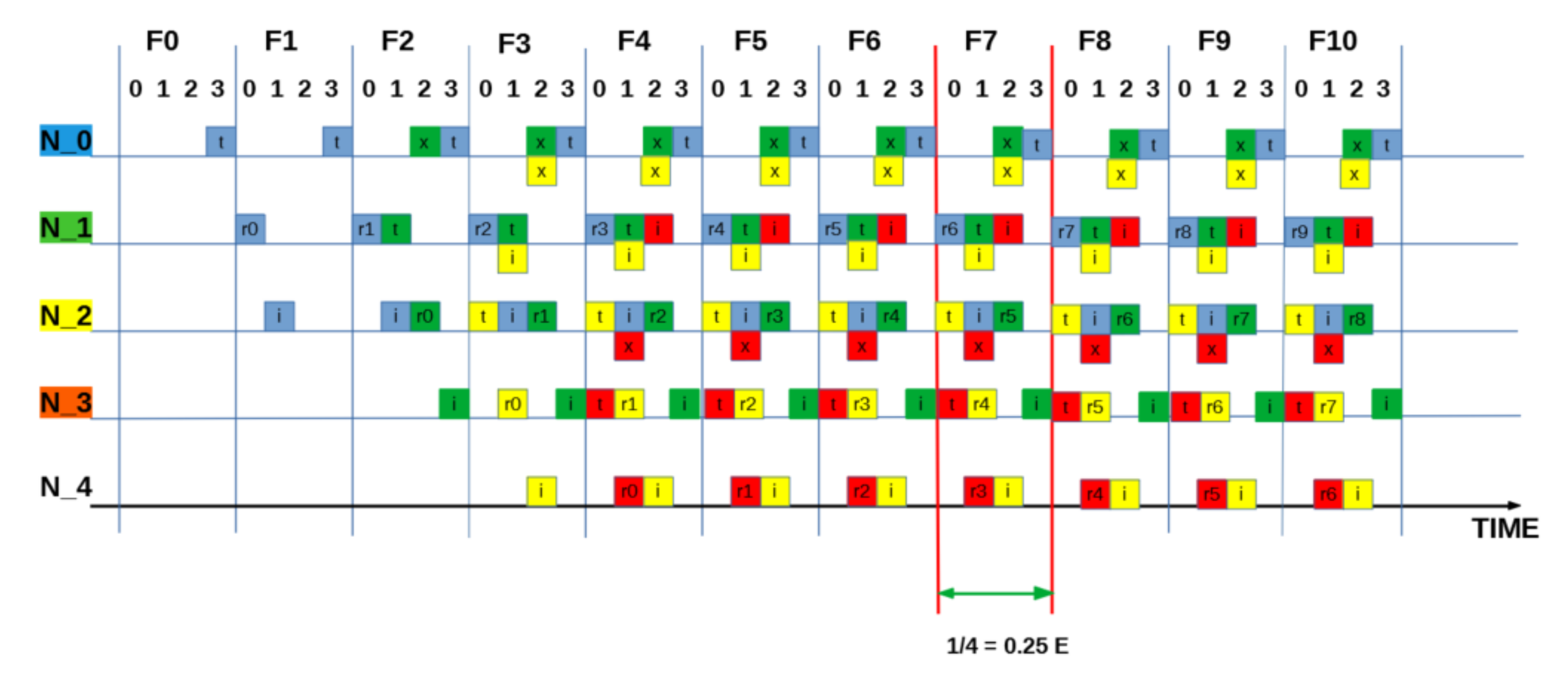
References
- Akyildiz, I.F.; Pompili, D.; Melodia, T. Underwater acoustic sensor networks: Research challenges. Ad Hoc Netw. 2005, 3, 257–279. [Google Scholar] [CrossRef]
- Syed, A.A.; Ye, W.; Heidemann, J. T-Lohi: A New Class of MAC Protocols for Underwater Acoustic Sensor Networks. In Proceedings of the IEEE INFOCOM 2008—The 27th Conference on Computer Communications, Phoenix, AZ, USA, 13–18 April 2008. [Google Scholar]
- Noh, Y.; Shin, S. Survey on MAC Protocols in Underwater Acoustic Sensor Networks. In Proceedings of the 2014 14th International Symposium on Communications and Information Technologies (ISCIT), Incheon, Korea, 24–26 September 2014; pp. 79–83. [Google Scholar]
- Gkikopouli, A.; Nikolakopoulos, G.; Manesis, S. A Survey on Underwater Wireless Sensor Networks and Applications. In Proceedings of the 20th Mediterranean Conference on Control & Automation (MED), Barcelona, Spain, 3–6 July 2012. [Google Scholar]
- Otnes, R.; Asterjadhi, A.; Casari, P.; Goetz, M.; Husøy, T.; Nissen, I.; Rimstad, K.; van Walree, P.; Zorzi, M. Underwater Acoustic Networking Techniques; Springer: Berlin/Heidelberg, Germany, 2012. [Google Scholar]
- Guan, J.; Huang, J.; Lu, J.; Wang, J. The underlying design in underwater acoustic wireless sensor network. In Proceedings of the IEEE International Conference of IEEE Region 10 (TENCON 2013), Xi’an, China, 22–25 October 2013; pp. 1–5. [Google Scholar]
- Yang, X. Underwater Acoustic Sensor Networks; Auerbach Publications: Boca Raton, FL, USA, 2010. [Google Scholar]
- Stoianov, I.; Nachman, L.; Madden, S.; Tokmouline, T. PIPENET: A wireless sensor network for pipeline monitoring. In Proceedings of the 6th International Conference on Information Processing in Sensor Networks, Cambridge, MA, USA, 25–27 April 2007. [Google Scholar]
- Gao, M.S.; Li, J.; Li, W.; Deng, Z.X. A Multi-Channel MAC Protocol for Underwater Acoustic Networks. In Proceedings of the IEEE 20th International Workshop on Computer Aided Modelling and Design of Communication Links and Networks, Guildford, UK, 7–9 September 2015. [Google Scholar]
- Chen, K.; Ma, M.; Cheng, E.; Yuan, F.; Su, W. A Survey on MAC Protocols for Underwater Wireless Sensor Networks. IEEE Commun. Surv. Tutor. 2014, 16, 1433–1447. [Google Scholar] [CrossRef]
- Karl, H.; Willig, A. Protocols and Architectures for Wireless Sensor Networks; Wiley: Hoboken, NJ, USA, 2005. [Google Scholar]
- Morozs, N.; Mitchell, P.; Zakharov, Y.V. TDA-MAC: TDMA Without Clock Synchronization in Underwater Acoustic Networks. IEEE Access 2018, 6, 1091–1108. [Google Scholar] [CrossRef]
- Morozs, N.; Mitchell, P.D.; Zakharov, Y. Linear TDA-MAC: Unsynchronized Scheduling in Linear Underwater Acoustic Sensor Networks. IEEE Netw. Lett. 2019, 1, 120–123. [Google Scholar] [CrossRef]
- Abramson, N. Development of the ALOHANET. IEEE Trans. Inf. Theory 1985, 31, 119–123. [Google Scholar] [CrossRef]
- Zhou, Y.; Chen, K.; He, J.; Guan, H. Enhanced Slotted ALOHA Protocols for Underwater Sensor Networks with Large Propagation Delay. In Proceedings of the IEEE 73rd Vehicular Technology Conference (VTC Spring), Budapest, Hungary, 15–18 May 2011; pp. 1–5. [Google Scholar]
- Chirdchoo, N.; Soh, W.S.; Chua, K.C. ALOHA-Based MAC Protocols with Collision Avoidance for Underwater Acoustic Networks. In Proceedings of the 26th IEEE International Conference on Computer Communications, Anchorage, AK, USA, 6–12 May 2007; pp. 2271–2275. [Google Scholar]
- Chirdchoo, N.; Soh, W.S.; Chua, K.C. RIPT: A Receiver-Initiated Reservation-Based Protocol for Underwater Acoustic Networks. IEEE J. Sel. Areas Commun. 2008, 26, 1744–1753. [Google Scholar] [CrossRef]
- Gorma, W.; Mitchell, P.D.; Morozs, N.; Zakharov, Y.V. CFDAMA-SRR: A MAC Protocol for Underwater Acoustic Sensor Networks. IEEE Access 2019, 7, 60721–60735. [Google Scholar] [CrossRef]
- Kredo, K.B.; Mohapatra, P. A hybrid medium access control protocol for underwater wireless networks. In Proceedings of the Second Workshop on Underwater Networks, Montreal, QC, Canada, 14 September 2007; pp. 33–40. [Google Scholar]
- Yan, Y.; Mitchell, P.; Clarke, T.; Grace, D. Adaptation of the ALOHA-Q protocol to Multi-Hop Wireless Sensor Networks. In Proceedings of the 20th European Wireless Conference, Barcelona, Spain, 14–16 May 2014; pp. 1–6. [Google Scholar]
- Alhassan, I.; Mitchell, P. Monitoring free span sections of subsea pipeline with ALOHA-Q. In Proceedings of the URSI Festival of Radio Science, Manchester, UK, 16 December 2019. [Google Scholar]
- Chu, Y.; Kosunalp, S.; Mitchell, P.; Grace, D.; Clarke, T. Application of reinforcement learning to medium access control for wireless sensor networks. Eng. Appl. Artif. Intell. 2015, 46, 23–32. [Google Scholar] [CrossRef]
- Mickus, T.; Mitchell, P.; Clarke, T. The emergence MAC (E-MAC) protocol for wireless sensor networks. Eng. Appl. Artif. Intell. 2017, 62, 17–25. [Google Scholar] [CrossRef][Green Version]
- Wang, Y.; He, H.; Tan, X. Robust Reinforcement Learning in POMDPs with Incomplete and Noisy Observations. arXiv 2019, arXiv:1902.05795. [Google Scholar]
- Rappaport, T. Wireless Communications Principles and Practice; Prentice Hall PTR: Upper Saddle River, NJ, USA, 2001. [Google Scholar]
- Mandal, P.; De, S.; Chakraborty, S.S. Characterization of ALOHA in underwater wireless networks. In Proceedings of the National Conference On Communications (NCC), Chennai, India, 29–31 January 2010; pp. 1–5. [Google Scholar]
- Lucani, D.E.; Stojanovic, M.; Medard, M. On the Relationship between Transmission Power and Capacity of an Underwater Acoustic Communication Channel. In Proceedings of the OCEANS 2008—MTS/IEEE Kobe Techno-Ocean, Kobe, Japan, 8–11 April 2008; pp. 1–6. [Google Scholar]
- Sen, S.; Dorsey, D.J.; Guérin, R.; Chiang, M. Analysis of Slotted ALOHA with multipacket messages in clustered surveillance networks. In Proceedings of the 2012 IEEE Military Communications Conference, Orlando, FL, USA, 29 October–1 November 2012; pp. 1–6. [Google Scholar]
- Ma, R.T.B.; Misra, V.; Rubenstein, D. An Analysis of Generalized Slotted-ALOHA Protocols. IEEE/ACM Trans. Netw. 2009, 17, 936–949. [Google Scholar] [CrossRef]
- Sutton, R.S.; Barto, A.G. Reinforcement Learning: An Introduction; MIT Press: Cambridge, UK, 1998. [Google Scholar]
- Claus, C.; Boutilier, C. The dynamics of reinforcement learning in cooperative multiagent systems. AAAI/IAAI 1998, 1998, 2. [Google Scholar]
- Boutilier, C. Sequential optimality and coordination in multiagent systems. IJCAI 1999, 99, 478–485. [Google Scholar]
- Robbins, H.; Monro, S. A stochastic approximation method. In Herbert Robbins Selected Papers; Springer: Berlin/Heidelberg, Germany, 1985; pp. 102–109. [Google Scholar]
- Oliehoek, F.A.; Amato, C. A Concise Introduction to Decentralized POMDPs; Springer: Cham, Switzerland, 2016. [Google Scholar]
- Wiering, M.; van Otterlo, M. Reinforcement Learning: State-of-the-Art; Springer Science & Business Media: Berlin/Heidelberg, Germany, 2012. [Google Scholar]
- Bonabeau, E.; Dorigo, M.; Theraulaz, G. Swarm Intelligence: From Natural to Artificial Systems; OUP: New York, NY, USA, 1999. [Google Scholar]
- USMART—Newcastle University. Available online: https://research.ncl.ac.uk/usmart/newsevents/october2018v3modemsreadyforfieldtesting.html (accessed on 2 November 2020).
- Tanenbaum. Computer Networks; Pearson Education Pte. Limited: Singapore, 2011. [Google Scholar]
- Peterson, L.L. Computer Networks—A Systems Approach, 3rd ed.; Morgan Kaufmann: Burlington, MA, USA, 2003. [Google Scholar]
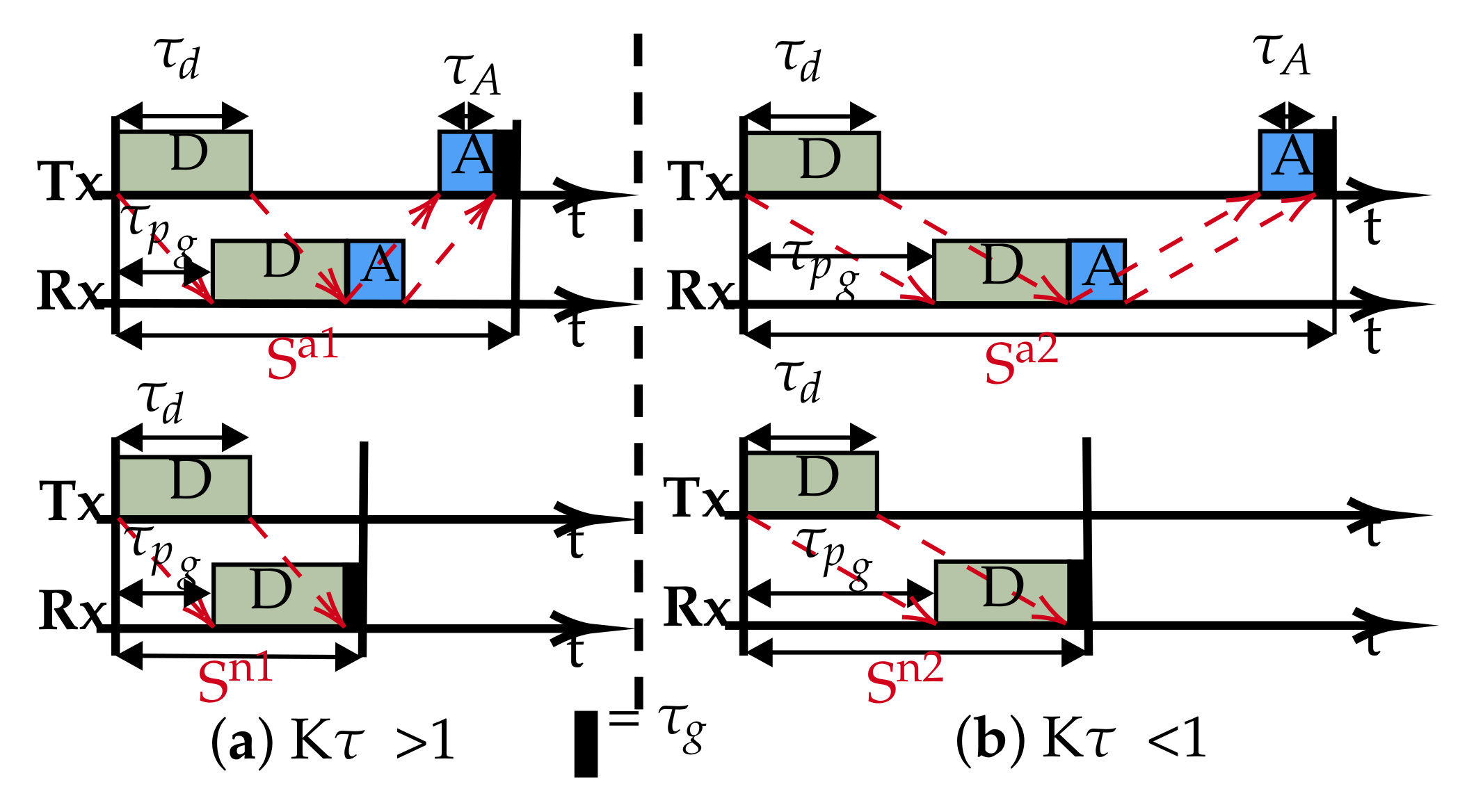
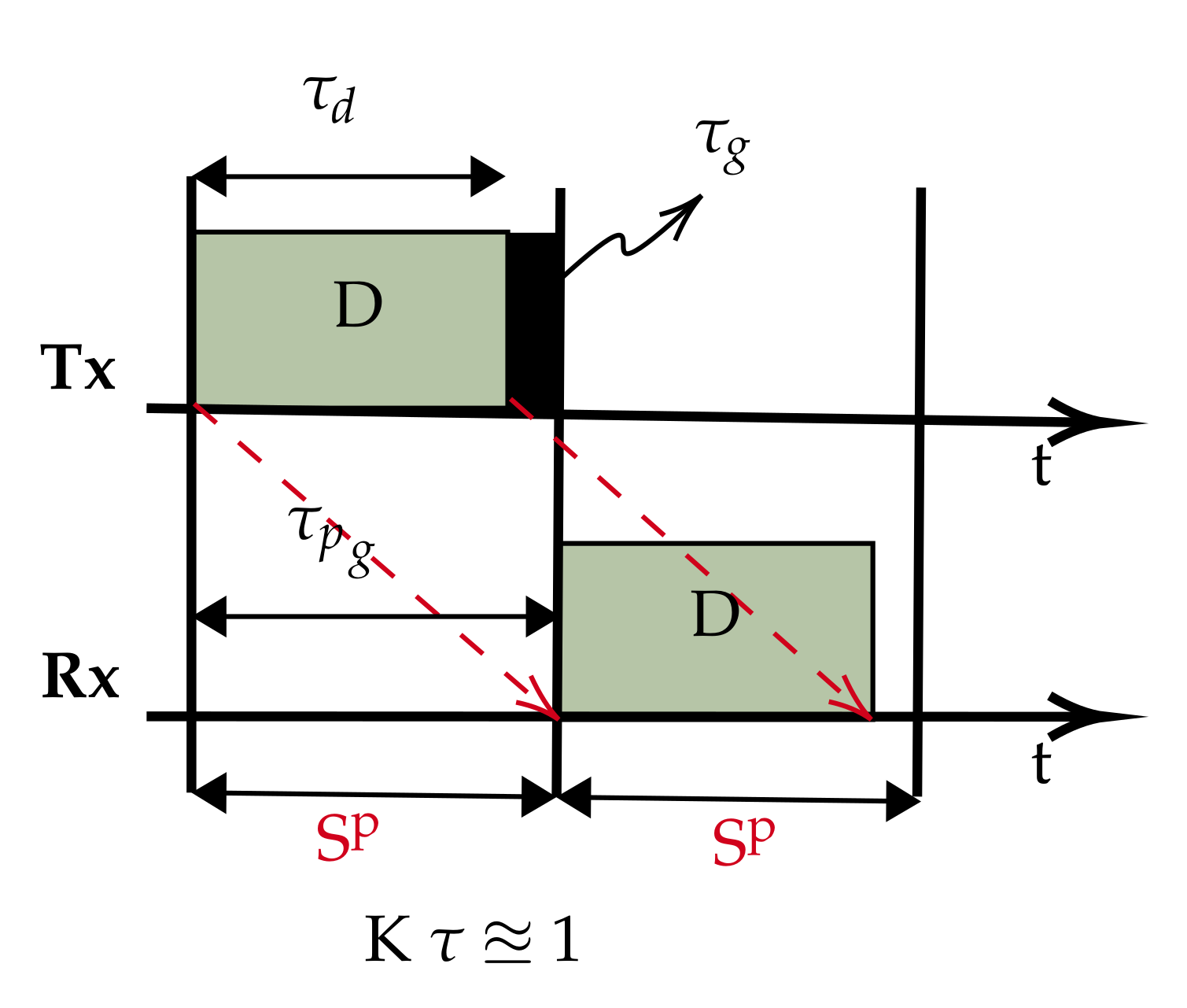
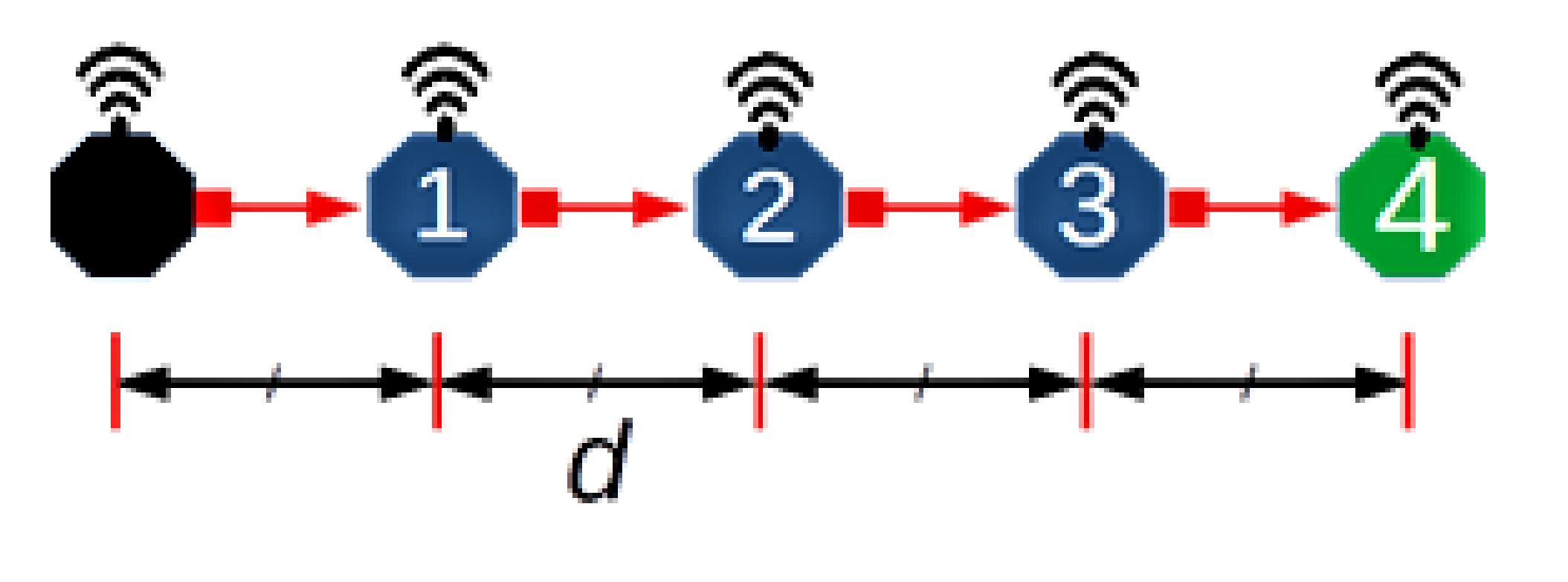
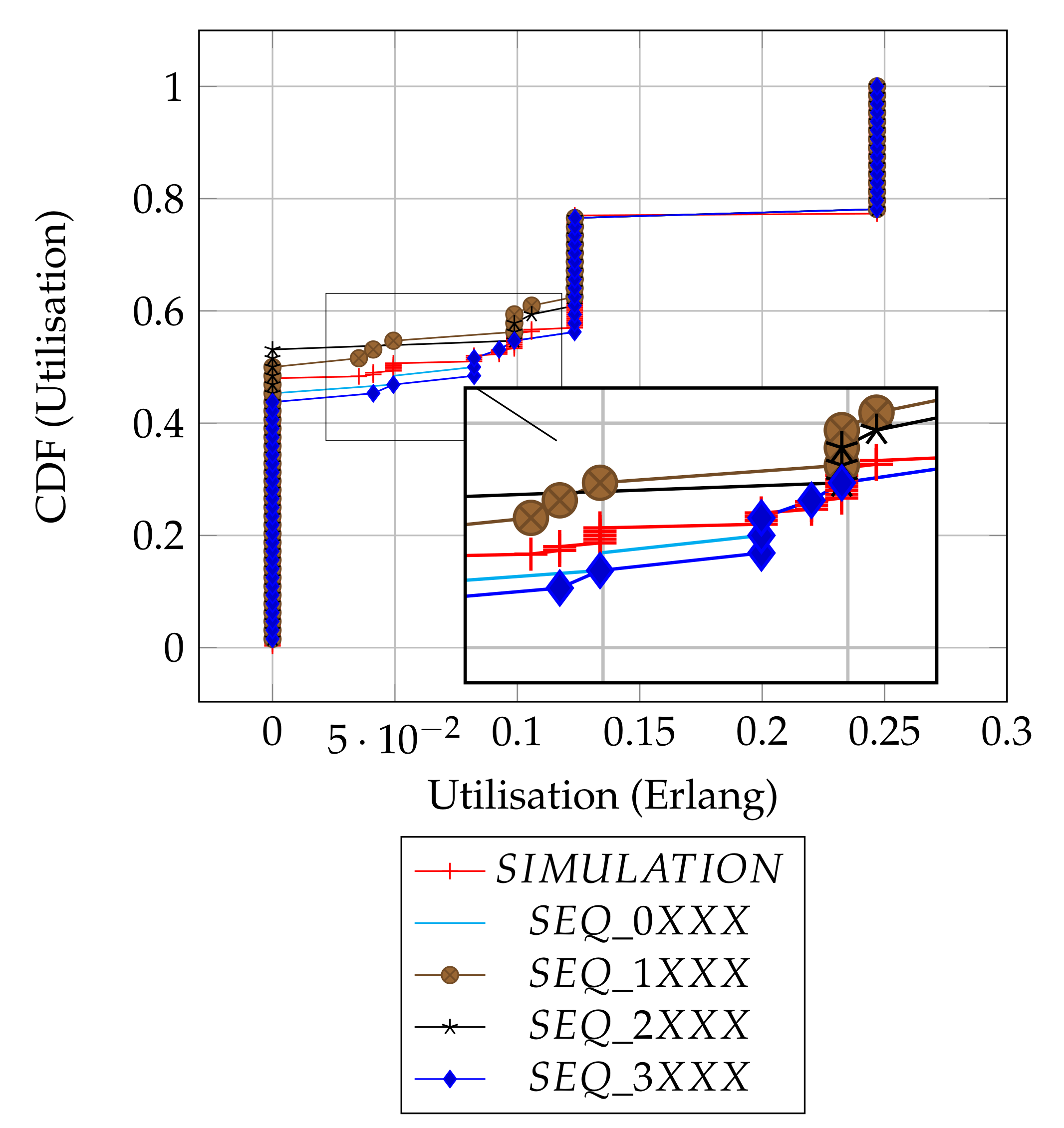
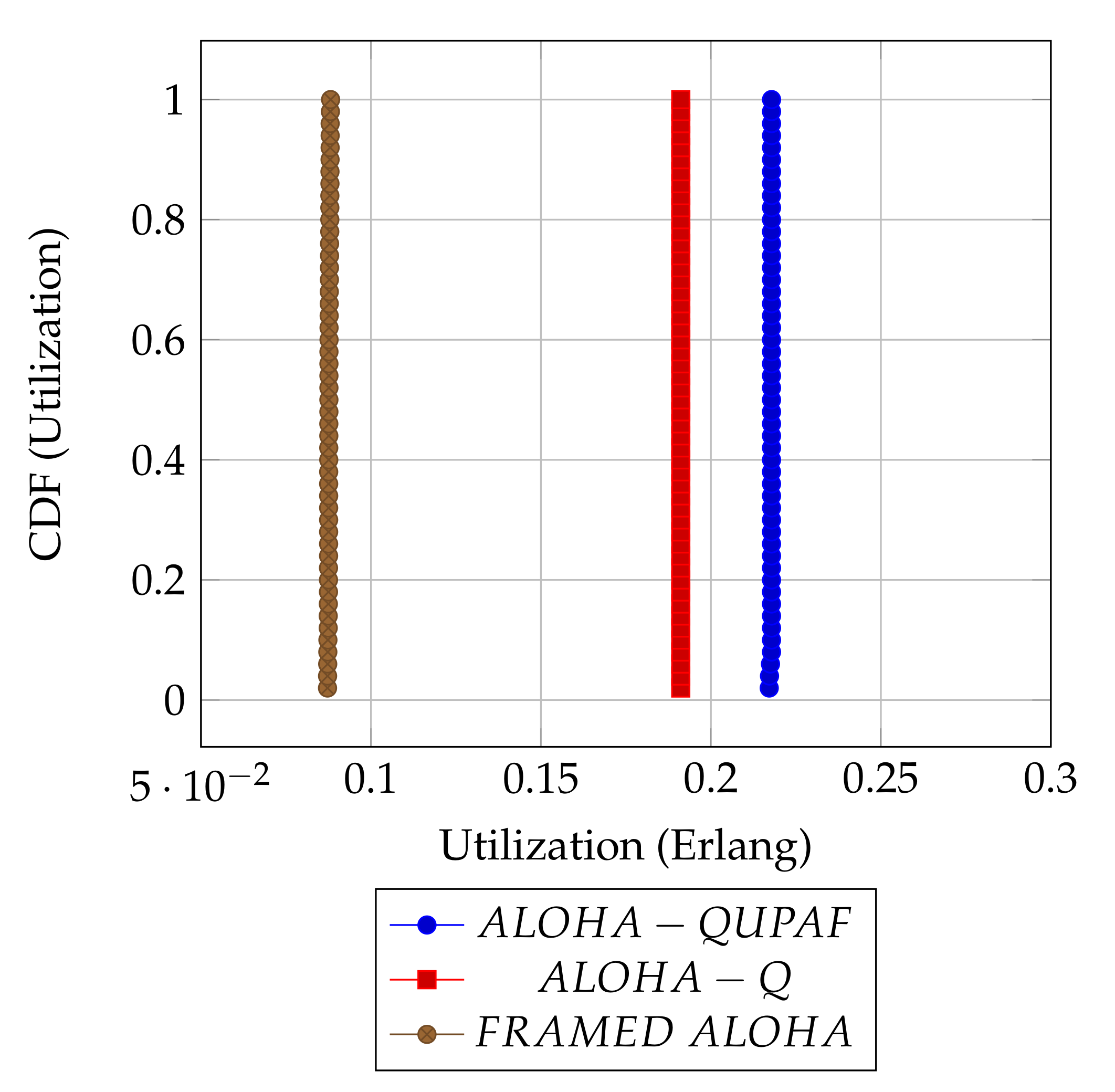

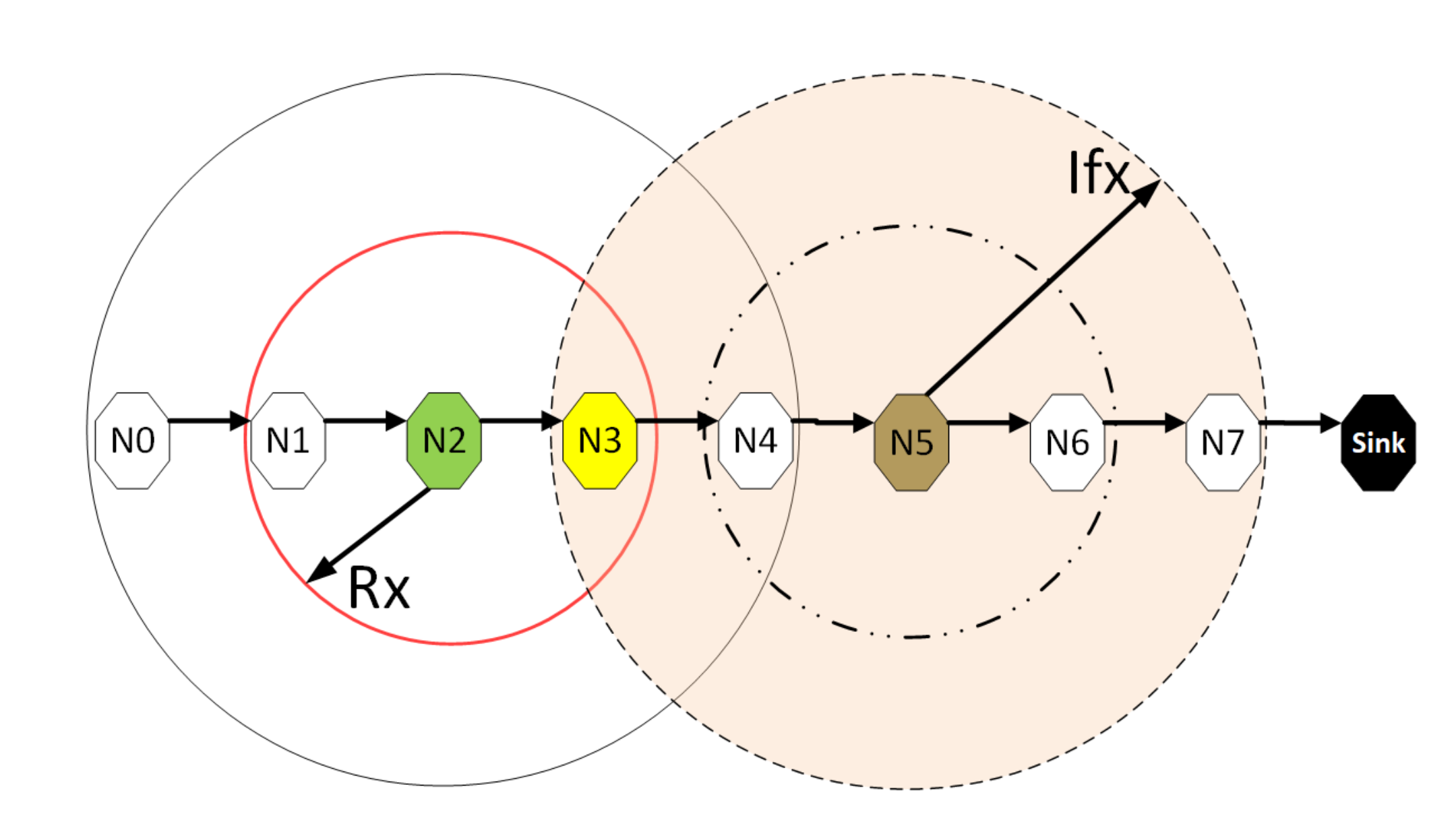
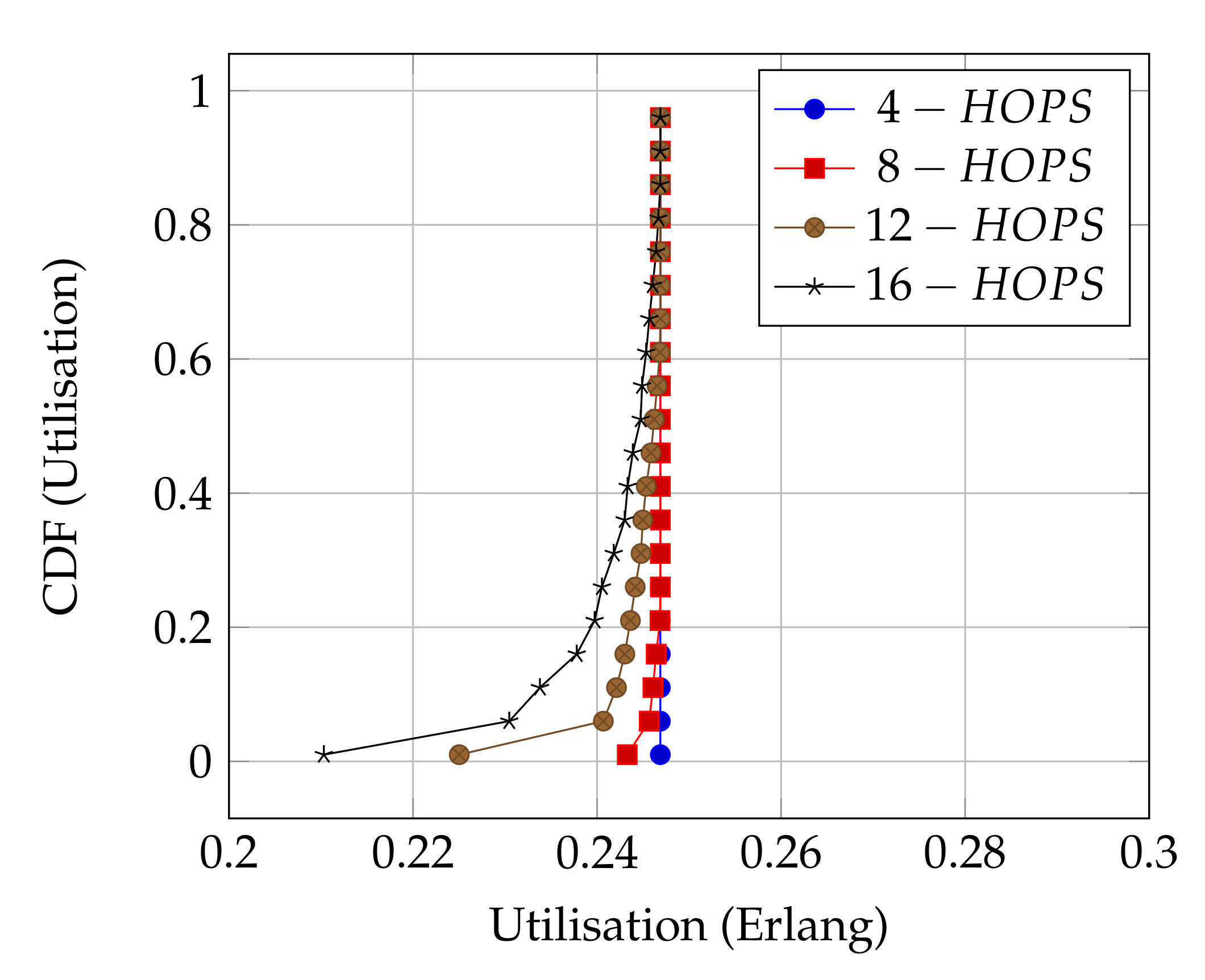
| Entry | Description |
|---|---|
| N | Number of nodes |
| Number of slots per frame | |
| Optimum number of slots per frame | |
| U | Channel utilisation |
| Data packet duration | |
| ACK packet duration | |
| Guard duration | |
| Ratio of -to- | |
| Slot size with ACK | |
| Slot size without ACK | |
| and | Learning rates |
| Optimisation scale | |
| fl | Packet flow average |
| S/N | Slot Sequence | |||
|---|---|---|---|---|
| SEQ_0XXX | SEQ_1XXX | SEQ_2XXX | SEQ_3XXX | |
| 0 | [ 0 0 0 0 ] | [ 1 0 0 0 ] | [ 2 0 0 0 ] | [ 3 0 0 0 ] |
| 1 | [ 0 0 0 1 ] | [ 1 0 0 1 ] | [ 2 0 0 1 ] | [ 3 0 0 1 ] |
| … | [ … ] | [ … ] | [ … ] | [ … ] |
| … | [ … ] | [ … ] | [ … ] | [ … ] |
| 62 | [ 0 3 3 2 ] | [ 1 3 3 2 ] | [ 2 3 3 2 ] | [ 3 3 3 2 ] |
| 63 | [ 0 3 3 3 ] | [ 1 3 3 3 ] | [ 2 3 3 3 ] | [ 3 3 3 3 ] |
| Level | Proportions (%) | ||||
|---|---|---|---|---|---|
| SEQ_0XXX | SEQ_1XXX | SEQ_2XXX | SEQ_3XXX | Overall | |
| Worst case (0 E) | 45.3 | 50.0 | 53.1 | 43.8 | 48.1 |
| Intermediate (0.03 E–0.1 E) | 9.4 | 10.4 | 6.3 | 10.9 | 9.4 |
| Half (0.125 E) | 21.9 | 15.6 | 17.2 | 21.8 | 19.1 |
| Maximum (0.25 E) | 23.4 | 23.4 | 23.4 | 23.4 | 23.4 |
| Frame/Q-Values | Q[0] | Q[1] | Q[2] | Q[3] |
|---|---|---|---|---|
| FRAME 0 | 0 | 0 | 0 | 0 |
| FRAME 1 | 0 | 0 | −0.1 | 0 |
| FRAME 2 | 0 | 0.1 | −0.1 | 0 |
| FRAME 3 | 0 | 0.1900 | −0.1 | 0 |
| FRAME 4 | 0 | 0.2710 | −0.1 | 0 |
| … | … | … | … | … |
| FRAME 20 | … | 0.8499 | −0.1 | 0 |
| Parameter | Value |
|---|---|
| Transmission/Reception Data Rate | 640 bps |
| Data Packet Size | 632 bits |
| ACK Packet Size | 16 bits |
| Slot Size | 640 bits |
| Slots per Frame | 4 |
| Reception Range | 200 m |
| ±1 | |
| 0.1 | |
| ±0.1 | |
| 0.2 | |
| 1 hop Propagation Delay (Relative to Packet Size) | 1 s |
Publisher’s Note: MDPI stays neutral with regard to jurisdictional claims in published maps and institutional affiliations. |
© 2021 by the authors. Licensee MDPI, Basel, Switzerland. This article is an open access article distributed under the terms and conditions of the Creative Commons Attribution (CC BY) license (http://creativecommons.org/licenses/by/4.0/).
Share and Cite
Alhassan, I.B.; Mitchell, P.D. Packet Flow Based Reinforcement Learning MAC Protocol for Underwater Acoustic Sensor Networks. Sensors 2021, 21, 2284. https://doi.org/10.3390/s21072284
Alhassan IB, Mitchell PD. Packet Flow Based Reinforcement Learning MAC Protocol for Underwater Acoustic Sensor Networks. Sensors. 2021; 21(7):2284. https://doi.org/10.3390/s21072284
Chicago/Turabian StyleAlhassan, Ibrahim B., and Paul D. Mitchell. 2021. "Packet Flow Based Reinforcement Learning MAC Protocol for Underwater Acoustic Sensor Networks" Sensors 21, no. 7: 2284. https://doi.org/10.3390/s21072284
APA StyleAlhassan, I. B., & Mitchell, P. D. (2021). Packet Flow Based Reinforcement Learning MAC Protocol for Underwater Acoustic Sensor Networks. Sensors, 21(7), 2284. https://doi.org/10.3390/s21072284







